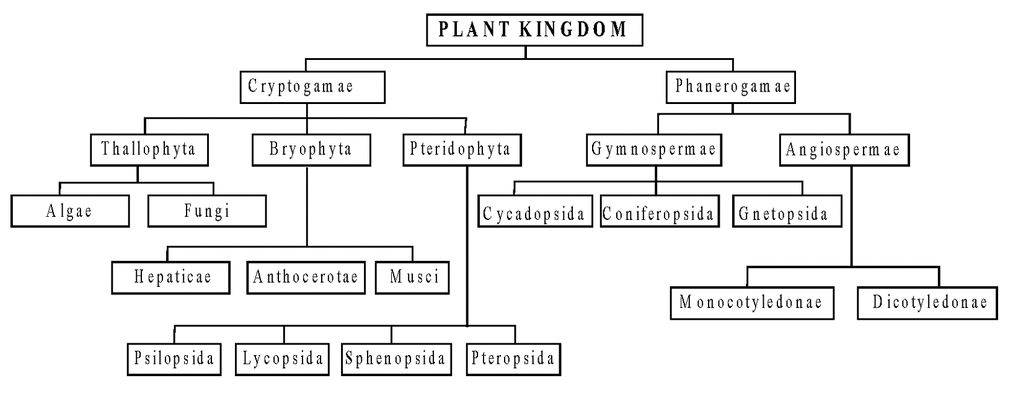
Plant Classification
Plant Kingdom of Class 11
Plant Classification
Plant classification is arrangement of plants into groups and subgroups on the basis of their affinities.
In a majority of systems which recognized only two Kingdoms of organisms, the plants were included in the Plant Kingdom and animals were placed in the Animal Kingdom.
For the classification of plants several systems were proposed from time to time by various botanists.
C. Linnaeus (1735) using the number and position of stamens, divided flowering plants into 23 classes starting with the class Monandria with a single stamen (e.g., Canna) and plants with twenty or more stamens were assigned to class Icosandria. He also included all non-flowering plants such as algae, fungi, lichens, mosses and ferns in a separate 24th class called Cryptogamia. His system was based on a few characters. He himself stated that his system of classification did not consider relationships. Morever, his system places widely unrelated families of monocotyledons and dicotyledons in one class. However, his system of classification was the best artificial system. Since his classification was based on the reproductive structures, it is called Sexual System of Classification.
Subsequently, several systems of classification of plants were proposed by taxonomists. Out of these, the common system was proposed by Schimper (1879), Eichler (1883), etc.

Common Sytem of Classification in Plants
The system proposed by Eichler, who was famous for his work entitled Bluthendiagramme (1875–78) was actually the first phylogenetic system of plant classification. He divided the plant kingdom into two sub-kingdoms, named as Cryptogamae and Phanerogamae, on the basis of the presence or absence of flowers and seeds. Cryptogams are further classified into three division namely Thallophyta, Bryophyta and Pteridophyta on the basis of complexity of the plant body. Thallophyta (GK. Thallose = undifferentiated; phyton = plant) includes
plants whose body is not differentiated among root, stem and leaves. Thallophyta was initially divided into Phycophyta (Algae) and Mycophyta (Fungi). Bryophyta (GK. Bryon = moss; phyton = plant) are characterized by the presence of conspicuous, green, well developed, nutritionally independent gametophytes. The Pteridophyta (Gk. Pteron = feather; phyton = plant) are the spore bearing most primitive vascular plants, commonly called vascular cryptogams. They are an assemblage of flowerless, seedless and spore bearing plants that have successfully invaded the land. The phanerogams are also known as spermatophyta (Gk Sperma = seeds, phyton = plant) since they produce seeds. These seed bearing plants were further grouped into two division Gymnospermae and Angiospermae. The Gymnosperms (Gk. Gymnos = naked; sperma = seeds) are naked seeded plants with their ovules freely exposed on open megasporophyll. Goebel has rightly described them “Phanerogams without ovary”. The Gymnosperms were divided into Cycads, Conifers, Cedars, etc. The angiosperms included all the following plants which produce seeds and have ovules enclosed in an ovary or fruit.
In 1942, Oswald Tippo proposed modern classification of plant kingdom. He divided entire plant Kingdom into two major groups, Thallopyta and Embryophyta on the basis of absence or presence of embryo. Embryophyta was divide into two groups, Bryophyta and Tracheophyta on the basis of absence and presence of vascular tissue. Tracheophyta was divided into Pteridophyta and Spermatophyta on the basis of absence or presence of seeds. Spermatophyta was divided into Gymnosperms and Angiosperms on the basis of nature of seeds and finally Angiosperms into Dicotyledons and Monocotyledons based on the number of cotyledons.









